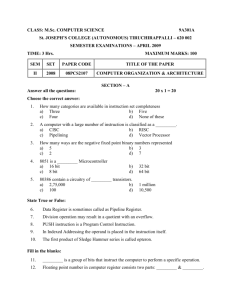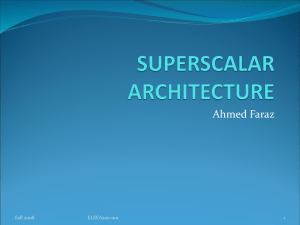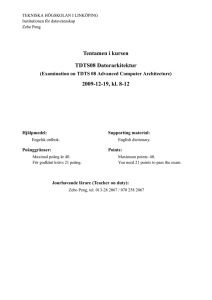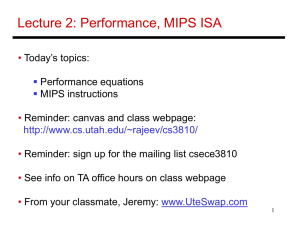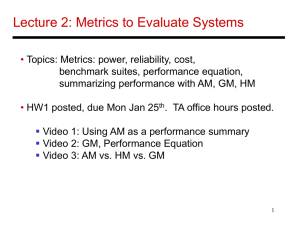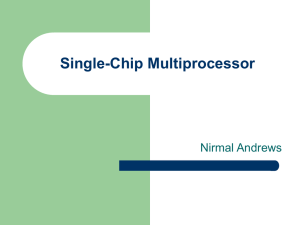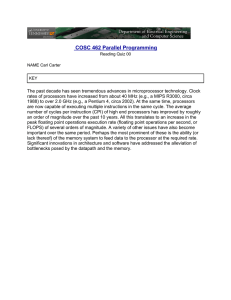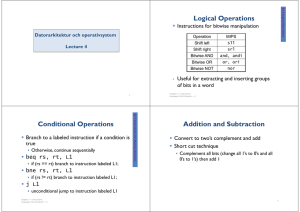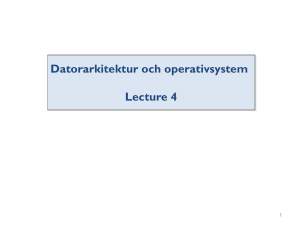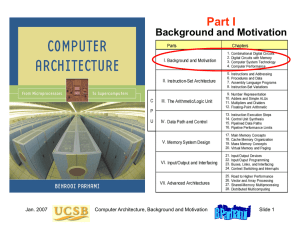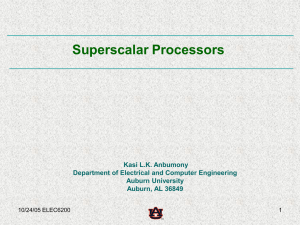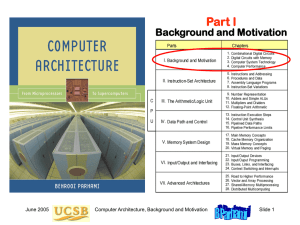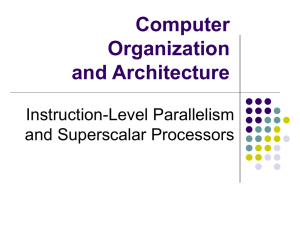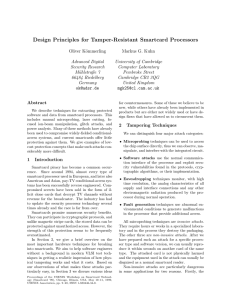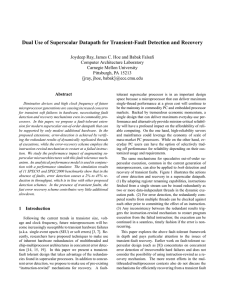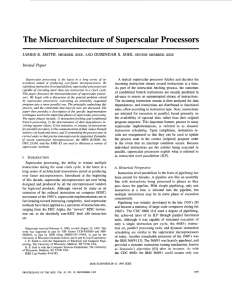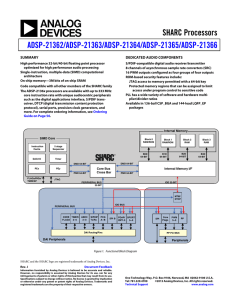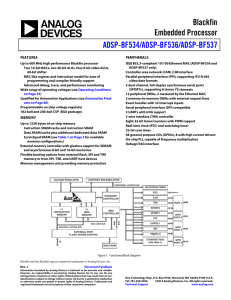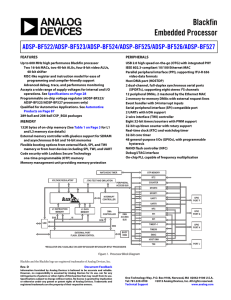Name - JustAnswer
advertisement
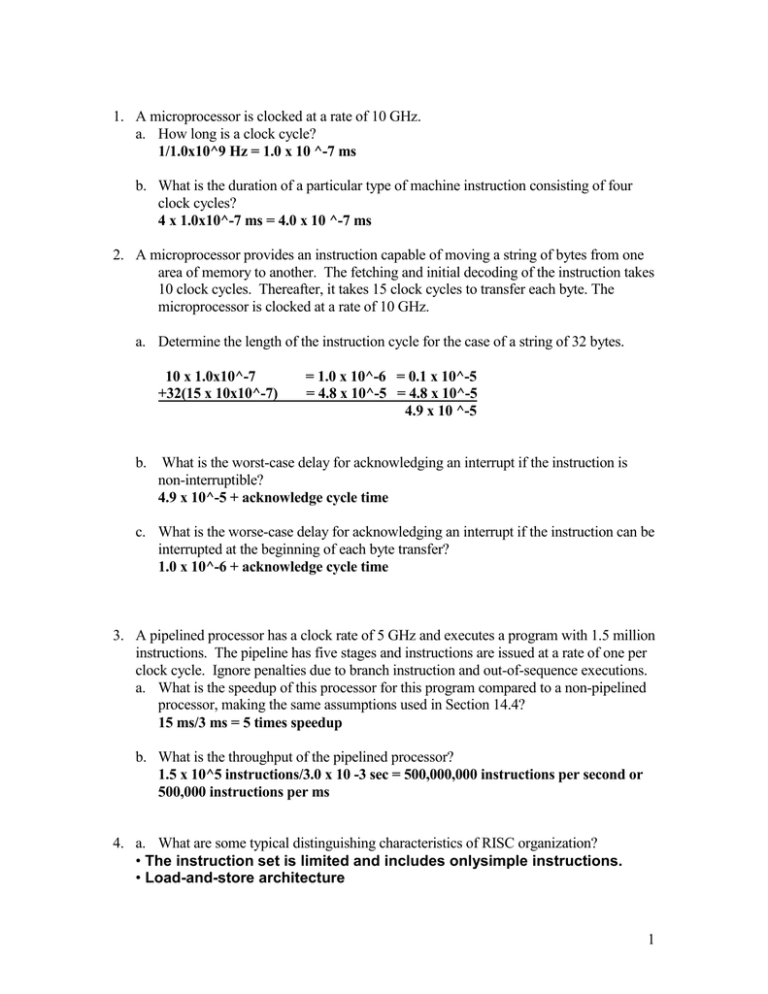
1. A microprocessor is clocked at a rate of 10 GHz. a. How long is a clock cycle? 1/1.0x10^9 Hz = 1.0 x 10 ^-7 ms b. What is the duration of a particular type of machine instruction consisting of four clock cycles? 4 x 1.0x10^-7 ms = 4.0 x 10 ^-7 ms 2. A microprocessor provides an instruction capable of moving a string of bytes from one area of memory to another. The fetching and initial decoding of the instruction takes 10 clock cycles. Thereafter, it takes 15 clock cycles to transfer each byte. The microprocessor is clocked at a rate of 10 GHz. a. Determine the length of the instruction cycle for the case of a string of 32 bytes. 10 x 1.0x10^-7 +32(15 x 10x10^-7) b. = 1.0 x 10^-6 = 0.1 x 10^-5 = 4.8 x 10^-5 = 4.8 x 10^-5 4.9 x 10 ^-5 What is the worst-case delay for acknowledging an interrupt if the instruction is non-interruptible? 4.9 x 10^-5 + acknowledge cycle time c. What is the worse-case delay for acknowledging an interrupt if the instruction can be interrupted at the beginning of each byte transfer? 1.0 x 10^-6 + acknowledge cycle time 3. A pipelined processor has a clock rate of 5 GHz and executes a program with 1.5 million instructions. The pipeline has five stages and instructions are issued at a rate of one per clock cycle. Ignore penalties due to branch instruction and out-of-sequence executions. a. What is the speedup of this processor for this program compared to a non-pipelined processor, making the same assumptions used in Section 14.4? 15 ms/3 ms = 5 times speedup b. What is the throughput of the pipelined processor? 1.5 x 10^5 instructions/3.0 x 10 -3 sec = 500,000,000 instructions per second or 500,000 instructions per ms 4. a. What are some typical distinguishing characteristics of RISC organization? • The instruction set is limited and includes onlysimple instructions. • Load-and-store architecture 1 • Instructions use only few addressing modes • Instructions use only few addressing modes b. Briefly explain the two basic approaches used to minimize register-memory operations on RISC machines. 1. Hardware delay of execution of the instruction following LOAD if the instruction needs the loaded value. 2. Compiler based solution with delayed load, in which case the compiler makes sure the instruction that is executed after a load instruction, does not require the value that was loaded – if no instruction is available, then a NOP instruction is executed. 5. a. What is the essential characteristic of the superscalar approach to processor design? Superscalar processing issues more than 1 instruction per cycle. Superscalar processing allows for out-of-order execution b. What is the difference between the superscalar and superpipelined approaches? 2



